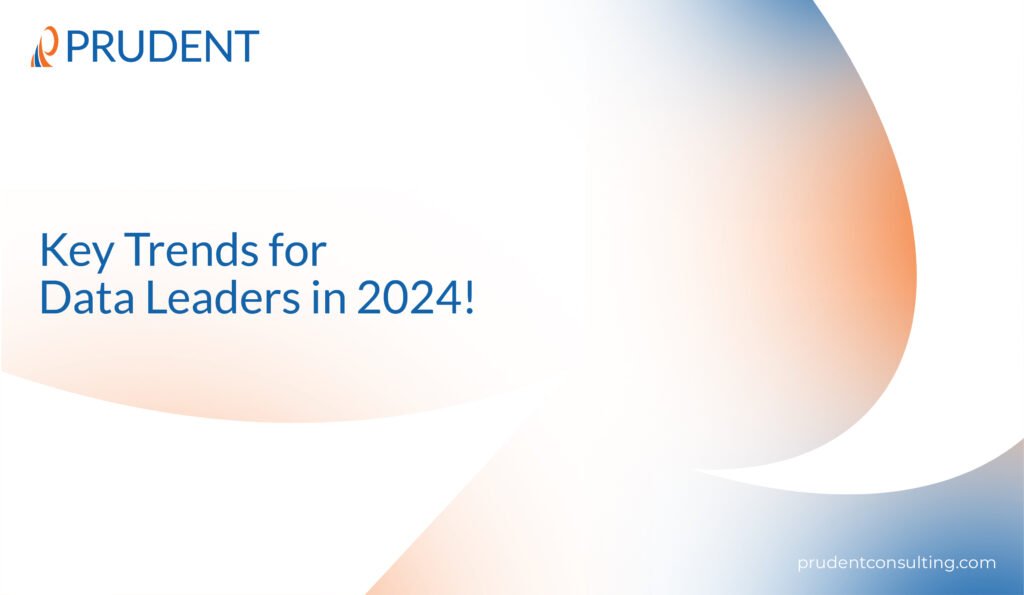Introduction
As we enter the promising year of 2024, the landscape of data and analytics is continuously evolving, offering both novel prospects and fresh challenges for leaders in the field.
In this blog, we dissect three pivotal trends set to shape the industry and pose opportunities and challenges for data leaders.
From the revolutionary impact of RAG*-based LLMs** to the momentum of verticalization within data infrastructure providers and the consolidation within data operations, we delve into actionable insights to help professionals thrive in this dynamic and ever-changing realm.
*RAG (retrieve, answer, generate)
**LLMs (Large Language Models)
First Pivotal Trend: RAG-Based LLMs
In 2023, Large Language Models (LLMs) played a central role in revolutionizing global data processing and analysis. However, their swift adoption brought about notable challenges, particularly in enterprise applications where issues like hallucinations and training-period limitations became apparent. Enter Retrieve, Answer, generate (RAG) models – a promising solution poised to transform data accessibility within enterprises. These models address AI hallucination challenges by providing auditable and up-to-date information, ensuring reliability and currency. For data professionals, embracing RAG-based LLMs is crucial, as they can significantly enhance the reliability and relevance of insights.
Practical guidance: Embrace RAG-based LLMs, explore training in this area, and consider their implementation for critical data initiatives to improve accuracy, reduce hallucinations, and ensure auditable and current information.
Second Pivotal Trend: Verticalization in Data Infrastructure Providers
The trend toward verticalization in data infrastructure providers has been gaining momentum, marked by significant acquisitions such as Databricks acquiring Arcion and Mosaic, Snowflake purchasing Neeva and Streamlit, and DBT acquiring Transform. This shift signifies a move towards vertical integration, with significant cloud providers aiming to offer comprehensive solutions within the data ecosystem. This not only reshapes the market but also presents opportunities for more effective integration and utilization of these platforms.
Practical guidance:
1. Monitor the impact of these integrations on your data operations tools and processes.
2. Evaluate how the changing landscape might offer new solutions or alter the functionalities of existing tools in your data stack.
3. Explore native capabilities from your cloud provider and decide when to consolidate tooling or seek independent, best-in-class solutions.
Third Pivotal Trend: Verticalization in Data Operations
The data operations sector is witnessing a parallel pattern, with startups introduced between 2020 and 2022 now reaching the end of their runways. This is evident through acquisitions by major industry players like IBM, Teradata, Collibra, and Bigeye, acquiring firms including Manta, Stemma, OwlDQ, SQLDep, and Data Advantage Group. The industry is moving towards consolidation, narrowing down the multitude of data tools introduced in the past few years.
Practical guidance:
1. Thoroughly assess potential vendors’ financial health, reputation, and strategic alignment.
2. Ensure chosen partners can maintain services, provide consistent support, and align with your organization’s long-term goals.
3. Review existing integrations when considering a data operations vendor to ensure seamless compatibility within your data stack.
In Conclusion
Entering 2024, these three trends – RAG-based LLMs, verticalization in data infrastructure, and data operations consolidation – present opportunities and challenges for data and analytics professionals. Remaining well-informed, flexible, and prepared to welcome these changes is essential for success in a continuously evolving data environment.
Prudent is a trusted partner in the path of innovation and growth with expertise spanning Salesforce, Data Services, Splunk, and I.T. Consulting & Staffing.

